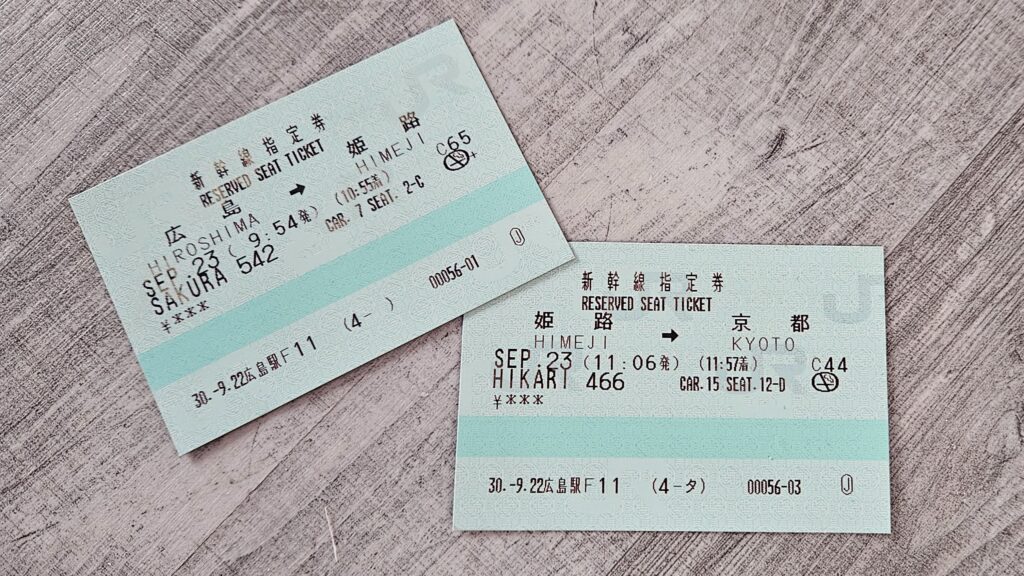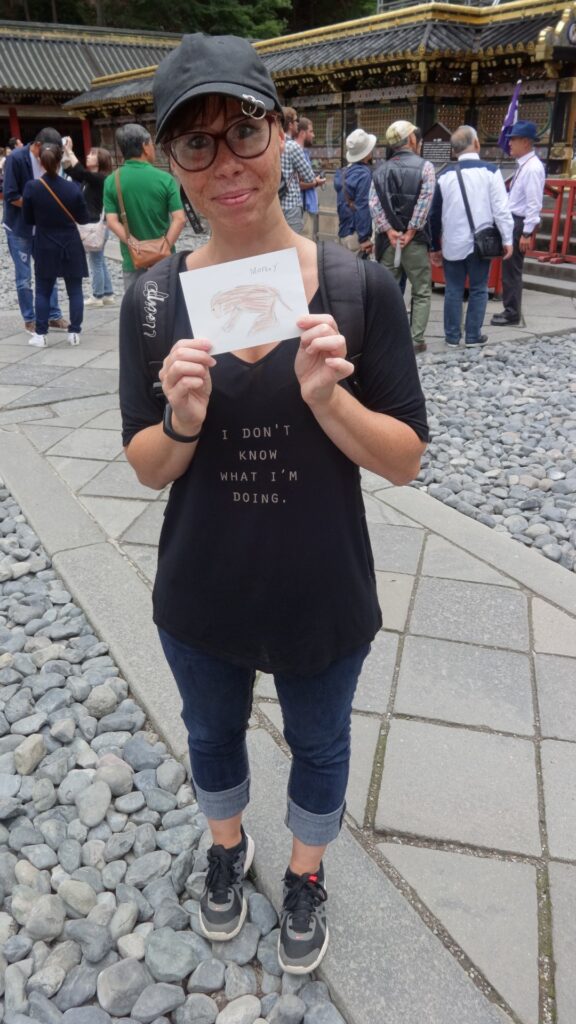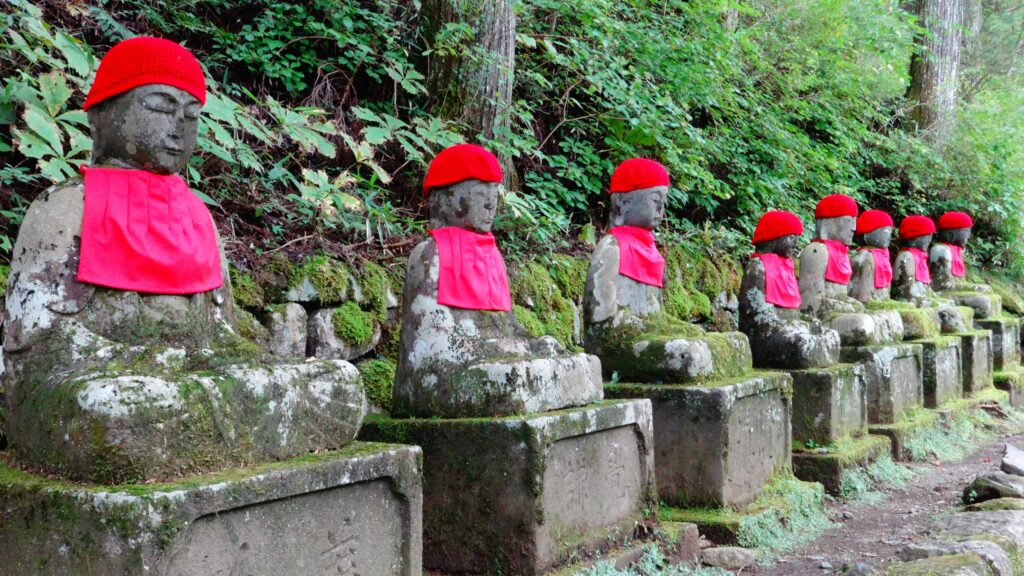
DAY 3
(Reading time: 7 minutes)
When it comes to Japan, many people immediately think of “shinkansen” – high-speed trains. Japan was the first country in the world to build a network of corridors for fast passenger transport. Trains have their names (according to the route), different designs, are precise, comfortable and can reach speeds of up to 320 km/h (the standard is around 240 km/h). Shinkansen routes mainly run over bridges and through designated tunnels to avoid crossing paths with other trains.

With a JR Pass, you don’t need to pay for individual shinkansen tickets, just go to the counter, show your JR Pass and reserve a seat. It’s better to do it several days in advance, as the trains sell out quickly. This doesn’t apply to the two fastest shinkansen trains – Nozomi and Mizuho – they are outside the JR Pass options and you can only buy a ticket for them separately.

All the information about the train, including the seat reservation, can be found on the tickets.
I’ll never stop praising how precisely the Japanese have designed the train travel system. You arrive at the station, and there are signs with the names of the trains and departure times everywhere. Okay, that’s normal. Moreover, along the entire length of the platform, the car numbers and boarding and alighting lanes are marked on the ground. You know exactly where the train will stop, where to stand for boarding, and where others will get off, ensuring the fastest possible boarding for everyone. And it must be really fast, as there is often only one minute allocated for getting on and getting off. Once the doors are closed, the train automatically departs. There is no delay, except for extreme weather conditions or earthquakes.
The interior of shinkansens is comfortable, spacious and quiet. Making phone calls and speaking loudly in the seating area is prohibited. The seats are comfortable armchairs with legroom in front of you (you can easily put a large suitcase in front of you), and the toilets meet Japanese standards – clean with heated seats and many other features; they may even sing to you.
Our trip to Nikko was our first opportunity to try traveling by shinkansen, and it has since become our favorite means of transportation. We traveled to our destination by Nasuno train.

The city of Nikko is located at the foot of the eponymous national park about 130 km north of Tokyo, and thanks to a direct shinkansen connection, it is ideal for a day trip from the capital. The city itself is not so visited; everyone comes here primarily for the famous shrine area located in the mountains.
On the way to the shrine mountain, we passed Shinkyo Bridge, one of the most beautiful bridges in Japan.

According to legend, the river god helped a monk and his disciples cross the river on dry land by turning two snakes into a bridge. Nowadays, if it’s not completely closed, entry to Shinkyo Bridge is paid and not worth it, as you can’t really take a beautiful picture of Shinkyo Bridge from Shinkyo Bridge, so it seemed better to admire it from the nearby road.
Nikko’s history dates back to the 8th century when a Buddhist monk Shodo Shonin founded the first temple here. Over time, the area became a significant religious center, and in the 17th century it was chosen by Shogun Tokugawa Ieyasu as his final resting place. He had his tomb placed in the Toshogu shrine area (outdoor crypt).
The detailed decoration and carvings of all the buildings in the complex are breathtaking, but one of them hides a rare treasure – the very first depiction of the three wise monkeys “see no evil, hear no evil, speak no evil.”

You can find the carving on the building that used to be a stable for Shogun Tokugawa Ieyasu’s horses, and its author is Hidari Jingoro. The idea behind this carving was to depict, in a simple way, Confucius’ teachings about life.

The entire area was crowded with children. It seemed that on the day of our visit, all the elementary schools in the area decided to send their pupils on a school trip to Nikko. So groups of students posed everywhere for group photos, there were lines everywhere and there was noise everywhere.
But beware! Some children were given a special task to find a foreigner, address them, and then interrogate them using pre-prepared/written questions. They were very simple: where are you from, where is your country located, what is it famous for, etc. Although the questions were read nicely by the school children, it seemed to us that they understood totally nothing at all and simply nodded politely (not to mention that our country doesn’t ring a bell to most people). For our exemplary cooperation, however, we were rewarded with hand-drawn pictures. How cute!


On the way down from the shrine mountain, we came across a small roadside stall where a lady was selling taiyaki – a traditional sweet treat in the shape of a fish. It tastes similar to pancake batter, and the most common filling is red bean paste.

A little further from Shinkyo Bridge, along the river, stand the mysterious Jizo statues.

Jizo are guardians of the souls of unborn children. Lined up against the wall, they stand silent and mysterious with their red caps and bibs. The red color repels demons and diseases, and handmade caps and bibs protect the children in the afterlife. If you try to count the statues, the number always comes out differently; don’t try to give life precise dimensions. It was really chilly at this spot, and since the weather had cooled down outside in the late afternoon, we had an excellent hot ramen with soba noodles and a soy roll in a small shack nearby, where a grandmother and grandfather ran their small family business.

On the way back to the train, we were accompanied by three actual wise monkeys. Who would have thought that the original models for the famous carving still live on and watch over the sacred mountain even after hundreds of years?

-endy-
DONKEY’S SPECIAL:
-mj-